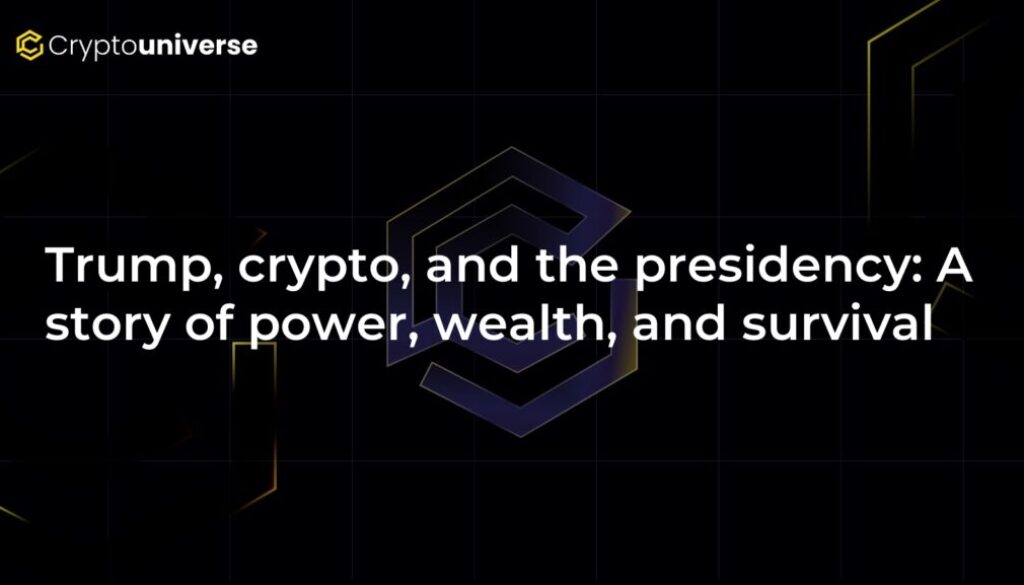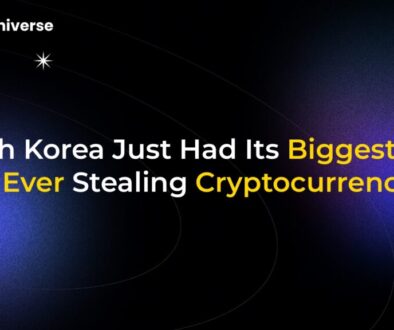Trump, crypto, and the presidency: A story of power, wealth, and survival

The Unlikely Alliance: How Trump Conquered Washington, Again
Donald J. Trump’s journey is a cinematic saga of power, wealth, and survival. A real estate mogul who became a reality TV icon, he crashed the political establishment’s party in 2016, leaving allies and enemies alike in disarray. But beyond the rallies, indictments, and relentless news cycles, a more strategic narrative has emerged: one where political survival, financial reinvention, and crypto-fueled rebellion intersect.
This post delves into the story of
From Real Estate to the White House: A President Who Lost Money
Trump’s 2016 victory was a tectonic shift, a populist revolt against an elite system many felt had failed them. He entered the White House as one of the wealthiest presidents in U.S. history, with a Forbes-estimated net worth of $4.5 billion. Yet, in a twist of irony, he became the first modern president to leave office poorer, with his fortune shrinking by over $2 billion during his term.
This stands in stark contrast to his predecessors:
- Bill and Hillary Clinton: Grew their net worth from approximately $1.3 million to over $120 million.
- Barack Obama: Saw his wealth increase from $1.3 million to an estimated $70 million.
- Joe Biden: Went from a modest net worth to over $10 million.
Their paths to wealth—lucrative book deals, high-paid speaking engagements, and consulting gigs—are well-trodden. These opportunities are often seen as a way for powerful interests to buy access without it being a direct bribe. But Trump, whose brand was forged in capitalism long before politics, chose a different, more disruptive path for his comeback.
Survival Mode: Legal Battles and the Hunt for Capital
Trump’s post-presidency was defined by unprecedented legal challenges. Facing 93 indictments and multiple criminal and civil trials, including a staggering $344 million civil fraud judgment in New York, the financial strain was immense. Even for a billionaire, fighting a government with limitless resources is a war of attrition.
This wasn’t just about money; it was about survival. His opponents sought to dismantle him politically and financially. With traditional donors hesitant and the 2024 election looming, Trump needed a new war chest—one that couldn’t be easily controlled or cut off by the establishment. He needed a new coalition.
The Crypto Pivot: From Skeptic to Savior
Initially, Trump was no fan of crypto. He famously tweeted that he was “not a fan of Bitcoin and other Cryptocurrencies,” calling them “not money” and based on “thin air.” But as the Biden administration, led by SEC Chair Gary Gensler, launched a regulatory crackdown on the crypto industry, an opportunity emerged.
The administration’s aggressive stance alienated a wealthy, tech-savvy, and politically motivated demographic. Innovation fled offshore, and American crypto entrepreneurs felt under attack. Trump saw an opening. By positioning himself as the pro-crypto candidate, he could tap into a powerful new source of support and funding.
The industry responded in kind. Crypto-linked Super PACs poured over $130 million into congressional races, reshaping the political landscape. Billionaires like Coinbase CEO Brian Armstrong backed Trump-aligned candidates, fighting for regulatory clarity. For a campaign trailing in fundraising, this new alliance was a game-changer.
Trump’s Crypto Empire: From NFTs to a Family Enterprise
Trump didn’t just advocate for crypto; he became a major player. His ventures snowballed from digital novelties into a sophisticated financial operation.
- Trump Digital Trading Cards (2022): His first foray, a collection of NFTs depicting him in heroic poses, generated around $7 million.
- Meme Coins ($TRUMP & $MELANIA): Capitalizing on meme culture, these tokens were launched with a simple utility: the top 100 holders of $TRUMP would get to attend a private party. Despite a lack of underlying value, trading fees from these coins reportedly netted Trump and his partners over $350 million.
- World Liberty Financial (WLF): Co-managed by his sons, Eric and Donald Jr., this DeFi venture became the cornerstone of his crypto strategy. A Trump entity owns 60% of the company and is entitled to 75% of revenue from its token, $WLFI.
Key investments, including a reported $75 million from TRON founder Justin Sun, brought total token sales to $550 million, with an estimated $390 million flowing to Trump-linked entities. The family also holds a reserve of $WLFI tokens valued at around $400 million.
The Ethical Tightrope and the Outrage Machine
Predictably, critics pounced. Senators Elizabeth Warren and Adam Schiff called for ethics investigations and even impeachment, labeling it a blatant pay-to-play scheme. The questions they raise are valid: Should a sitting president profit from highly speculative assets? Is offering dinner parties to top token holders a new form of selling access?
However, the outrage often seems selective. When House Speaker Nancy Pelosi’s investment portfolio consistently and spectacularly outperformed the market and even elite hedge funds, the criticism was comparatively muted. When the Clintons accepted $750,000 for a single speech, it was largely accepted as standard post-presidency practice.
The difference may lie not in the act of enrichment itself, but in the vehicle. Trump used a new, disruptive, and poorly understood technology that lies outside the control of the traditional financial and political establishment. When critics argue that Trump’s crypto dealings are “over the top,” one has to ask: is it the amount that offends them, or the fact that it’s Trump and it’s crypto?
Red Flags and Course Corrections
Trump’s crypto journey hasn’t been without serious concerns. WLF’s day-to-day operations were initially handled by Zachary Folkman and Chase Herro, a pair with a checkered past. Their previous DeFi platform, Dough Finance, suffered a $2 million hack, and a fraud lawsuit was later filed against Herro. Folkman’s other ventures included a relationship advice company called “Date Hotter Girls.”
This history raised red flags across the crypto community, questioning their technical and financial qualifications. However, in a sign of course correction, control of WLF was transitioned in January 2025 to a holding company where the Trump family owns a majority stake, effectively sidelining the original operators and signaling a move toward more professional management.
A Billion-Dollar Bet on Survival
In total, Donald Trump and his family appear to have generated close to a billion dollars pre-tax from their crypto ventures. This financial arsenal proved crucial. While Biden and Harris raised nearly $2 billion for their campaign, Trump managed just $1 billion yet secured victory.
Crypto gave him leverage without Wall Street, liquidity without book deals, and a financial moat against legal and political attacks. It was a masterclass in survival, demonstrating that in the new political landscape, a powerful brand combined with a mobilized digital community can rival traditional sources of power and wealth.
As his second term unfolds, with bold policies like the “One Big Beautiful Bill” and a crackdown on illegal immigration, Trump continues to polarize. His supporters see a president delivering on his promises, while detractors see a threat to established norms. Whatever your view, one thing is clear: the intersection of


